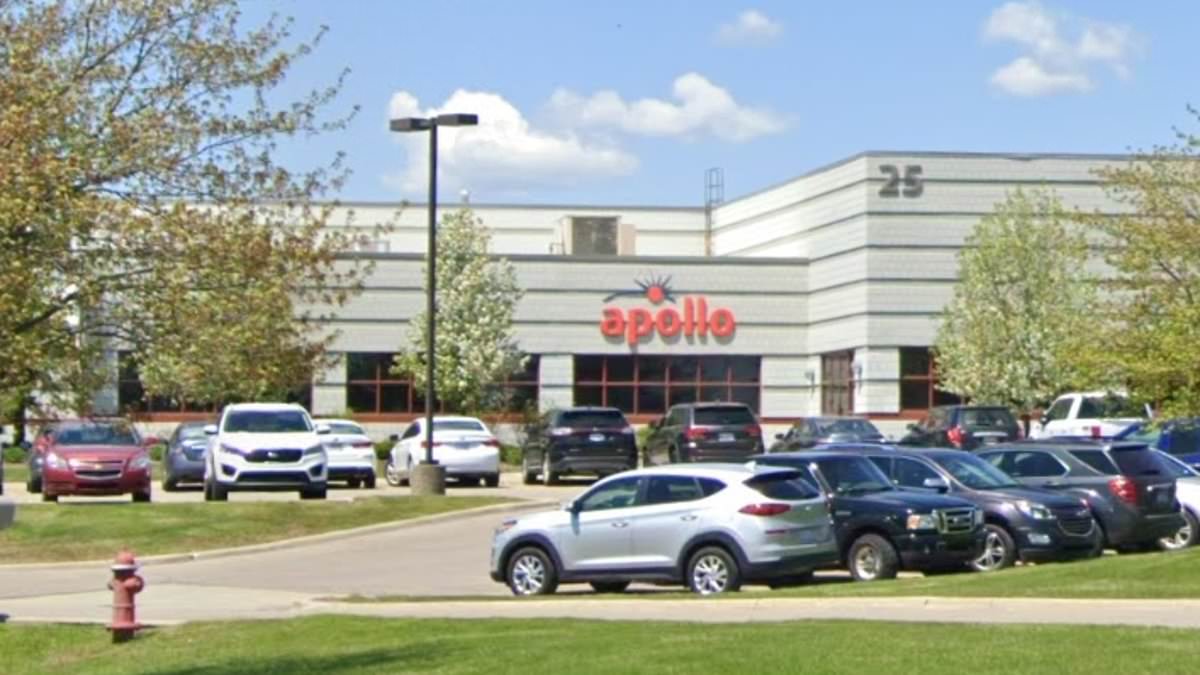A safety systems company has issued an urgent recall for more than 50,000 faulty smoke and carbon monoxide detectors, warning device malfunctions could be deadly.
Apollo America has called back its Combination Smoke and Carbon Monoxide Detectors, the US Consumer Product Safety Commission (CPSC) announced on Thursday.
The model 51000-600 alarms may fail to sound off if fire or toxic gases are detected, putting people a serious risk of smoke inhalation, carbon monoxide poisoning or death, according to the CPSC.
All of the detectors included in the recall are white and have a ‘replace by’ date range from June 2034 to October 2034 on the front. ‘Apollo’ and the model number are written on the back of it.
The defective products were exclusively sold through Utah-based retailer Vivant online, or through door-to-door or telephone sales from June 2024 to October 2024.
Costing roughly $50 to $100 each, Vivant is sending free replacements to those who purchased the affected detectors.
The tens of thousands of households believed to have these detectors installed should replace them.
However, people should not stop using the recalled alarms until they get a new one, the CPSC wrote.
Safety officials also warned that consumers should be cautious while getting rid of detectors’ non-rechargeable lithium batteries, stating they can not be tossed like regular garbage.
‘Lithium batteries must be disposed of differently than other batteries, because they present a greater risk of fire,’ the recall reads.
‘Your municipal household hazardous waste (HHW) collection center or battery recycling boxes found at various retail and home improvement stores may accept this lithium battery for disposal.’
People should reach out to their local HHW beforehand to make sure they accept lithium batteries.
No one has reported any injuries or incidents related to the called back Apollo detectors.
Apollo America, based in Michigan, manufactures devices that are sold across North America, according to the company’s website.
It is a subsidiary of The Halma Group, an England-based global group of safety equipment firms.
Both smoke inhalation and carbon monoxide exposure could be detrimental to people’s health.
Carbon monoxide – a subtle killer – claims hundreds of American lives each year, according to the Centers for Disease Control and Prevention (CDC).
Unlike smoke, carbon monoxide is a colorless and odorless gas that causes sickness and death if inhaled.
More than 400 Americans die, roughly 100,000 are taken to the emergency room and about 14,000 are admitted to the hospital every year from unintentionally breathing in the gas.
In February, three US tourists were found dead in a Belize hotel. Their toxicology reports revealed they were killed by ‘fatal exposure to carbon monoxide poisoning.’
Kaoutar Naqqad, 23, Imane Mallah, 24, and Wafae El Arar, 26, were found dead inside their room at the Royal Kahal Beach Resort in San Pedro.
Each of the women died from acute pulmonary edema, a build-up of fluid in the lungs.
A toxicology examination confirmed in March that the fatal condition was triggered by exposure to carbon monoxide poisoning.
Local police believe a malfunctioning water heater in the women’s room may have been to blame.
Each of the women registered carbon monoxide saturation levels of around 60 percent. Saturation levels of 40 percent are enough to cause death.
In another harrowing incident, the owner of an adored Baltimore restaurant died from carbon monoxide poisoning inside his own home, leaving his loved ones and customers heartbroken.
Costas Triantafilos, 85, the owner of the famed Costas Inn, and his wife Mary were found unconscious inside their Glen Arm, Maryland, home in March.
Baltimore County Fire Department officials rushed to the scene in response to reports of a cardiac arrest.
But they soon detected high levels of the toxic gas flooding the home from a vehicle was left running in their garage, CBS reported.
Costas tragically did not survive the carbon monoxide poisoning, while Mary was hospitalized and expected to recover.
Signs of carbon monoxide poisoning often first present as flu-like symptoms including headache, weakness, upset stomach, and vomiting.
Dr. Albert Rizzo, Chief Medical Officer for the American Lung Association, told DailyMail.com: ‘Since it’s odorless, tasteless, it can be very insidious and people don’t often equate these kinds of symptoms with carbon monoxide poisoning.’
Exposure can also lead to blurry vision and headaches, a dangerously fast heartbeat, seizures, loss of consciousness, shortness of breath, respiratory failure, cardiac arrest and death.
Carbon monoxide is produced when fossil fuels burn without enough oxygen.
Inhaling car or lawnmower exhaust is a leading cause. But people are also vulnerable to poisoning in the safety of their homes, especially if they live in smaller spaces.
